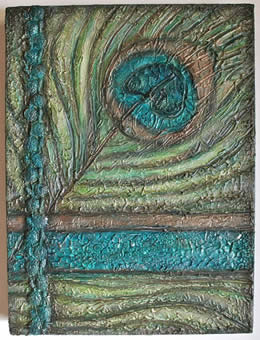Visual Texture (SL & HL1)
(Recommended working time: One Day)
In this assignment students will:
- This is your first "Sketchbook Addition." Sketchbook additions are like half projects in that they are intended as partial review AND partial reference. By creating a sketchbook addition you are practicing the creative division of space on a page and recording information, practicing drawing and researching. It is important to make every addition a careful and well planned exercise so think about what you are going to say and how it will look in your sketchbook when it is done.
Investigation Workbooks (IWB): (1-2 pgs.)
Visual Texture pages :
- To begin this activity you must have completed the in-class observation drawing assignment sketching at least three overlapping visual textures. Complete a reference section in your sketchbook that illustrates Visual Texture and some common uses. Follow the basic step-by-step directions below to add the "Visual Texture " section to your sketchbook
-
Mounting the Texture Sketches into your sketchbook:
(Always save a space at the top or along the side for a page title.)
- Open your sketchbook to the next blank page.
- If necessary, paint or prepare the page for new information.
- Carefully tear or creatively cut out your 2 best examples of overlapping texture limiting the amount of negative space in each sketch (crop the drawings).
- Creatively arrange your examples on the page you intend to mount them allowing some room for a caption next to each one (see expectations below).
- Glue in the examples making sure the samples are well glued down so that they do not become dislodged from the repeated turning of pages.
- Authoring the Visual Texture Page
- Label the pages of your sketchbook at the top or along the side neatly with the title, “Visual Texture.”
- Using colored pencils, gel pens, or felt-tipped pens, point to and describe the three different textures in each drawing. Ex.- “1.- Soft, rounded leaves.”
- On each page in full, complete sentences, and in a visually creative way, answer the following questions correctly:
- What do you think this sketch technique will work best for?
- How long did it take you to do the drawings on this page?
- Include two additional “facts” about these drawings (ex.: where they were drawn, what time of day it was, date, etc.
The Learning Goals:
(This is what the addition will be graded on at the end)
- Completion- Follow all of the directions and ensure the project is complete with titles, sub headings, all visual and written information.
- Density- Pages should be PACKED with information. So much so that a person should not be able to place a quarter on the page without it touching either written or visual information.
- Design- Carefully plan out your pages and specifically place items like titles, subheadings, pictures, and written information.
Assessment: Students may show their work for critique and submit their sketchbooks for evaluation.
 |